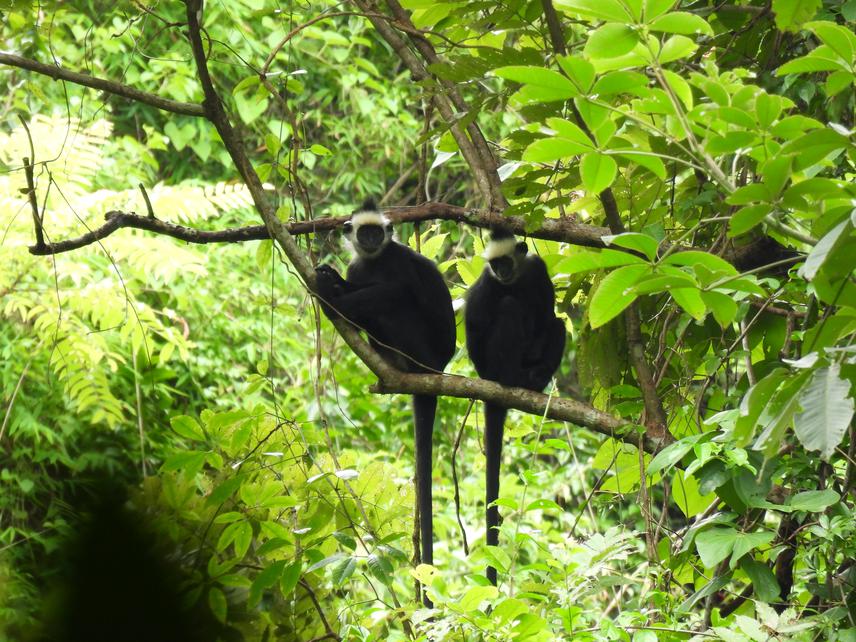Johnny Souwideth
The Lao Langur (Trachypithecus laotum) are only found in two protected areas (Phou Hin Poun and Nam Kading) in central of Laos. This species is listed under Appendix II of CITES and is listed in the IUCN Red List as Vulnerable and endemic species to Laos. Nowadays, their population is decreasing rapidly and is threatened with extinction in the future. The major threats are hunting and habitats loss. To address this, up-to-date information of the species is needed in order to support appropriate conservation action. Hence, the need for a field monitoring program to record their current presence, population, habitat and threats. This will help to promote local people’s awareness about conservation of the globally threatened species. This project conduct in Phou Hin Poun National Protected Area, Khammouane province, Laos.

Phou Hin Poun NPA is one of the original 18 National Biodiversity Conservation Areas of Lao PDR established in 1993. It is also home to a number of rare or newly discovered species and provides habitat of nationally and globally key primate species including endemic Lao Langur, endangered Southern white-cheek gibbon, vulnerable Stamp-tailed Macaque and two recently described species the Laonastes aenigmamus, new genus of rodent described in 2005 (Jenkins et al. 2005) and bare-faced bubul Pycnonotus hualon, which was first described in 2009 (Woxvold et al. 2009). A total of 67 species of small mammals including three Insectivora, one Scandentia, 39 Chiroptera, 24 Rodentia and 43 bat species and 14 turtle species have recorded in the NPA.
The NPA has been recognized as one of the priority sites for conservation of Namascus siki, the Gibbon Conservation Action Plan for Lao PDR (2011), both South white-cheeked gibbon and Lao Langur species are the flagship for biodiversity conservation of the area.
Lao Langur is only known to occur in central part of Laos. It is a globally threatened, in the category Vulnerable by IUCN Red List of Threatened Species (Timmins & Boonratana 2008) and is listed under Appendix II of CITES. Some data of this species were gathered since 1994 and detailed distributional data paper was published in 2011 (Steinmetz et al 2011). In 2010, a survey on distribution and conservation status were conducted in the NPA by Wildlife Conservation Association (Phiaphalath 2010). Previous studies provided important data about the species. However, the information about Lao Langur is still not updated up to present. To promote appropriate conservation action, it is necessary to conduct a field survey to record the present information and data about species presences, population, habitat and threats in order to provide an up-to-date species information. This data will help protected area staffs and villagers monitor the population trends of the species and promote local people to participate and engage in key primate species conservation and protection activities in Phou Hin Poun NPA.
The expected outcomes of this project are to:
1)Provide up-to-date information on distribution and conservation status of Phou Hin Poun NPA.
2) Train to protected area staffs about basic wildlife mapping, data collection and field survey and;
3) Promote local people’s awareness on wildlife conservation by participating project activities.